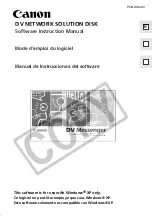
Erasing a Logical Drive
You can use maxView Storage Manager to erase the data on any logical drives that are in the Optimal
state. The logical drive remains in the Enterprise View and ready to store new data.
Caution: When you erase a logical drive, you lose all data on that drive.
To erase a logical drive:
1. In the Enterprise View, select a controller, then select the logical drive you want to erase.
2. On the ribbon, in the Logical Disk group, click Erase.
The Erase VD window opens.
3. Click Erase to erase the logical drive; click Cancel to cancel the action.
Deleting a Logical Drive
When you delete a logical drive, it is removed from the Enterprise View and the disk drives or segments
in the logical drive become available to use in a new logical drive (see
Creating a Logical Drive Using
Available Segments
on page 53), or to expand an existing logical drive (see
Increasing the Capacity of
a Logical Drive
on page 59).
Caution: When you delete a logical drive, you lose all data stored on that logical drive.
Be sure that you no longer need the data on the logical drive before you delete it.
To delete a logical drive:
1. In the Enterprise View, select a controller, then select the logical drive you want to delete.
2. On the ribbon, in the Logical Disk group, click Delete.
3. When prompted, click Delete to delete the logical drive; click Cancel to cancel the action.
Adding maxCache SSD Caching to Your Storage Space
maxView Storage Manager supports an advanced SSD caching technology called maxCache. maxCache
uses the Solid State Drives (SSDs) in your storage space as fast cache memory, providing performance
benefits for both read and write operations in I/O-intensive applications with mixed workloads.
maxCache read and write caching can be applied independently on a per controller or per logical drive
basis. With maxCache read caching enabled, the system analyzes I/O traffic and copies frequently read
“hot” data to the maxCache Container—a reserved logical drive comprised of SSDs only—for faster
retrieval. With maxCache write caching enabled, the system populates the maxCache Container with
certain "hot" blocks from the logical drives in your storage space. All writes to those hot data blocks go
directly to the maxCache Container. The data remains on the maxCache Container until it is full or some
other “hotter” data replaces it. The data is then flushed from the cache and written back to the logical
drives in your storage space.
61
Proprietary and Confidential to PMC-Sierra, Inc.
Document No.: CDP-00278-01-A Rev. A, Issue:
maxView Storage Manager User's Guide
















































